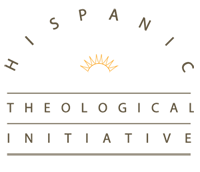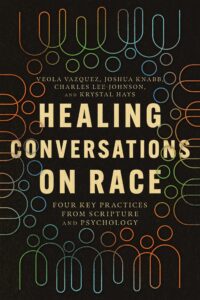Veola Vázquez, Joshua Knabb, Charles Lee-Johnson, and Krystal Hays present a new model that integrates Christian faith and psychology, as a double response to the problem of racism. In Healing Conversations on Race, they articulate this model with the four components of humility, empathy, acceptance, and love. The names of those components produce the helpful acronym “HEAL.” This model emerged from the authors’ life experiences and professional expertise in ministry and behavioral sciences: The authors, who come from diverse ethnic and racial backgrounds, created this model while sharing their own stories of pain related to race and racism.
In chapter one, the foundations of the model are explained. The authors approach the Bible as a unified story of redemption with Christ as its center, a story that continues to unfold throughout history in four pivotal stages — creation, fall, redemption, and restoration. They argue that the Bible’s grand storyline addresses the problem of racial disunity and provides a solution. The model is theologically oriented and Christocentric in focus as it intends to bring Jesus to the center of every healing conversation on race. Proposing an integrated approach, the authors move beyond a Christian model, enhancing their model for healing conversations by integrating psychological advancements, as well as by “drawing on several bodies of literature within contemporary, including attachment theory, emotionally focused therapy (EFT), and the psychology diversity literature” (25). In this chapter, the authors reflect on the problem of racism in the United States and provide data showing how Americans have been dealing with race-related issues in recent decades.
The following chapters explain the four components of the model. In chapter two, the authors place a crucial emphasis on Christlikeness as the first step to fighting racism and promoting healing. They argue that Christlikeness enables a person to fight racism by being more Christlike rather than less racist.
The model is exposed in constant dialogue with contemporary literature about racism. The reader is trained to identify different manifestations of racism and to respond to them from a biblical and psychological perspective. The authors also highlight the fact that the model is primarily designed for individuals or small groups to promote change on a micro-level, which will naturally lead to macro-level changes, i.e., changes in systemic or institutional racism.
The authors then explain in chapter three the core practice of empathy in cross-racial relationships and healing conversations. In the following chapter four, the authors expound on how to deal with emotions when experiencing racism or discussing race-related topics. Chapter five deals with the importance of love to overcome racial disunity and heal the wounds caused by the sin of racism. In these four chapters, the authors develop each component of the model from a biblical and psychological perspective, drawing from biblical literature and from scholarly psychology literature. The last chapters—six and seven—provide extra practical training on how to hold effective healing conversations on race, and to address the readers with a final biblical encouragement.
Each chapter contains well-elaborated practical exercises: lectio divina, personal reflection, prayer, and journaling exercises. The book equips the readers to engage in healing conversations on race using the valuable tools provided by the model. Each chapter presenting race-related stories of real people wounded by the sin of race, racial disunity, and racial injustice.
This new book is well-written, and its message readily accessible. The figures are illuminating and valuable indexes are provided. The book could have added a glossary for a quick explanation of technical terms.
Healing Conversations on Race is a book that warrants a read. It presents a compelling and safe model for healing conversations. Individuals and churches seeking to overcome racial disunity and promote healing on micro and macro levels will not want to miss it. I highly recommend it for equipping ministers in theological seminaries.
Texas Baptist Institute & Seminary




